20mnsi Q235 Square Bar Steel Billets 3SP 5SP 20MnSi for Ceramic Tunnel Kiln
- Loading Port:
- Dalian
- Payment Terms:
- TT OR LC
- Min Order Qty:
- 100 m.t.
- Supply Capability:
- 50000 m.t./month
OKorder Service Pledge
OKorder Financial Service
You Might Also Like
20mnsi Q235 Square Bar Steel Billets 3SP 5SP 20MnSi for Ceramic Tunnel Kiln
Description
Reference Price:$260/ton Mn 0.3%-0.6%
Rectangular billet continuous casting billet and mainly general carbon steel, low carbon low silicon cold-rolled material, high quality carbon structural steel, high strength low alloy steel, special steel, etc.
The billet is mainly divided into two kinds from the shape:
Slab: cross section width and height of the ratio of the larger, mainly used for rolling plate.
Billet: equal cross section width and height, or a huge difference, mainly used for rolling steel, wire rod. ,
Steel billets have distinct characteristics as compared with already furnished steel bars and products. Billets have a specific grain structure, which enables the metal to be processed more intricately. Steel billets are also known for their malleability and ductility, especially when exposed to varying temperatures during shaping and molding.
Processing of Steel Billet
Steel billets are considered fresh and raw, and they must undergo a series of manufacturing processes before they can be used for various purposes. Billets are made by means of freezing molten liquid, and are later exposed to extremely low temperatures in order to allow the metal to take shape and solidify in chemical structure. The temperature manipulates the metal's physical properties, and tones its strength and durability. The subsequent processes provide the metal's curved mold design so that it can fit the allotted space provided by other machines, which complete the finishing procedures.
Images
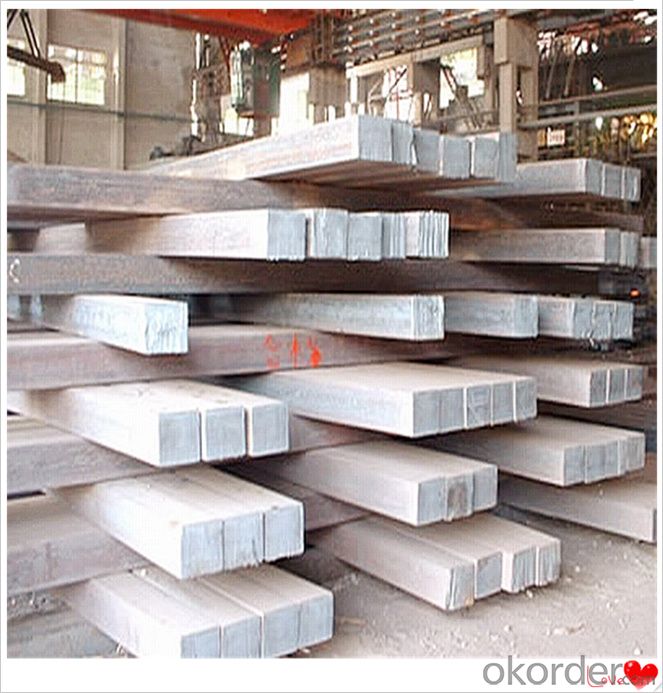
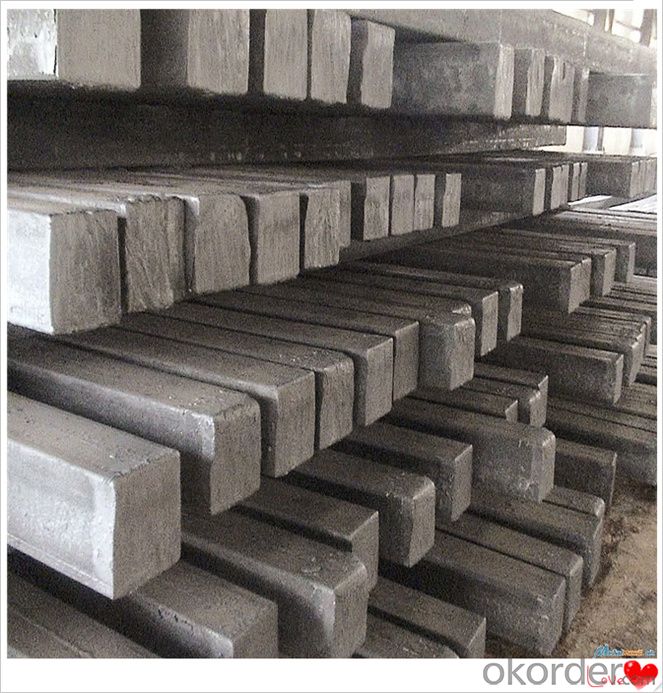
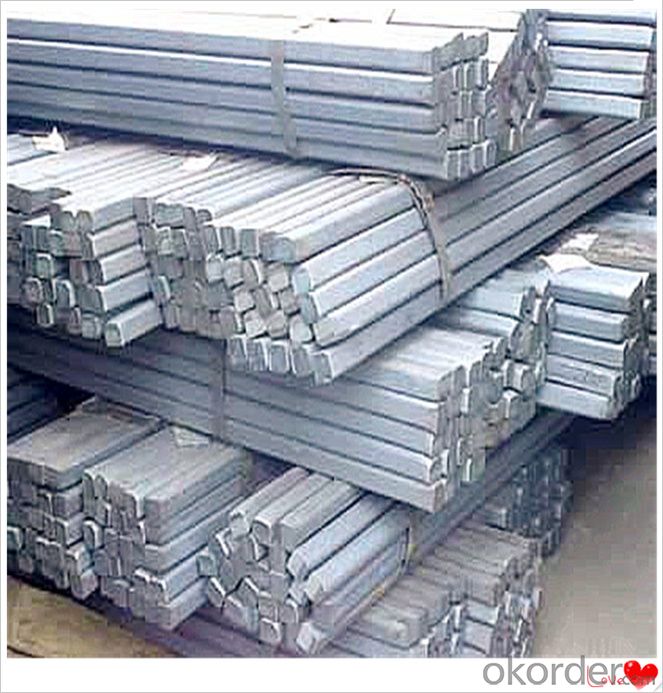
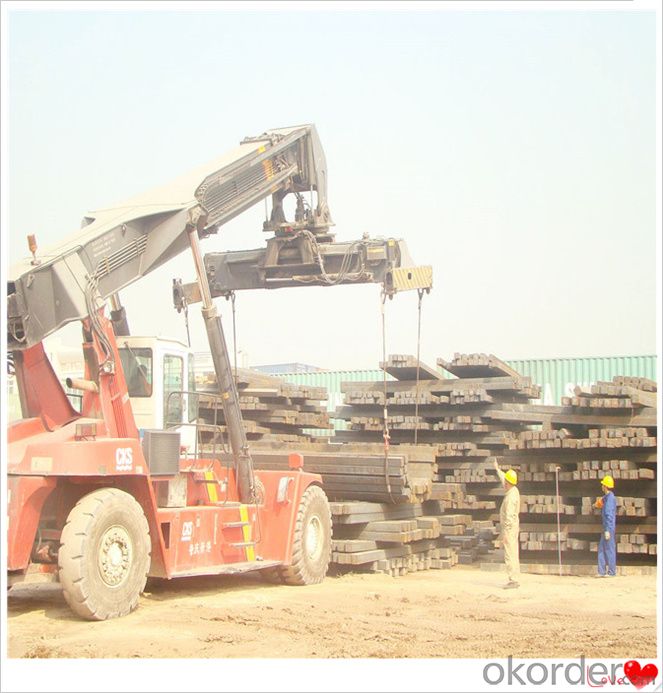
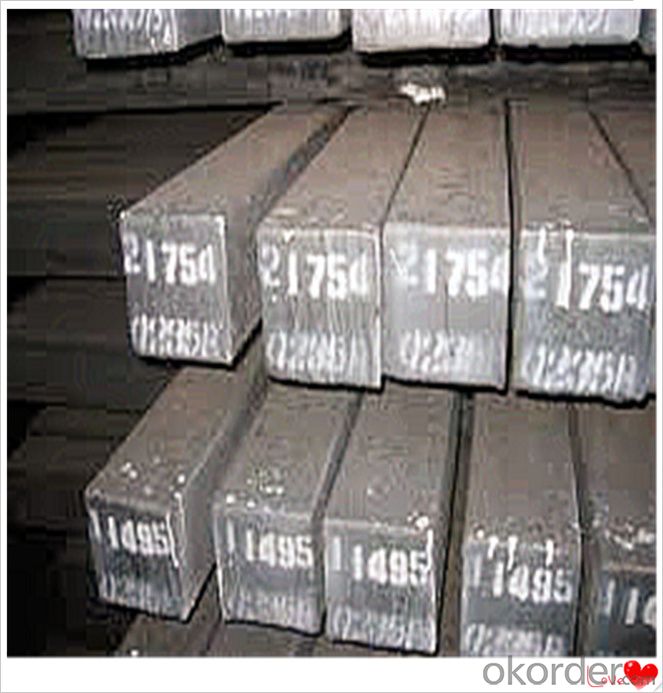
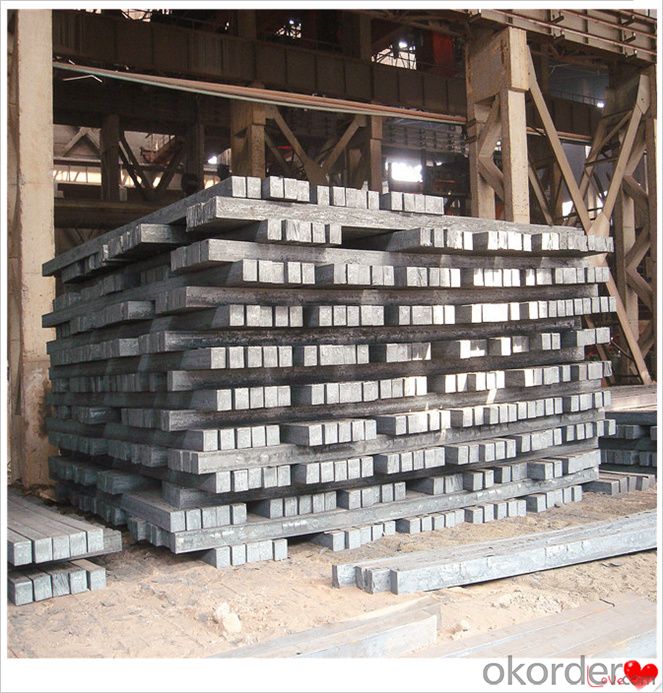
Technical Data
Size:100*100,120*120,150*150,130*130
Mn: 0.3%-0.6%
C: 1%
Cr:0.1%
Packaging
cargo ship or container
usually container price will add 15USD per ton
RFQ
We have organized several common questions for our clients,may help you sincerely:
1) How about your company?
A world class manufacturer & supplier of castings forging in carbon steel and alloy steel,is one of the large-scale professional investment casting production bases in China,consisting of both casting foundry forging and machining factory. Annually more than 8000 tons Precision casting and forging parts are exported to markets in Europe,America and Japan. OEM casting and forging service available according to customer’s requirements.
2) How to guarantee the quality of the products?
We have established the international advanced quality management system,every link from raw material to final product we have strict quality test;We resolutely put an end to unqualified products flowing into the market. At the same time, we will provide necessary follow-up service assurance.
3) How long can we receive the product after purchase?
In the purchase of product within three working days, We will arrange the factory delivery as soon as possible. The pecific time of receiving is related to the state and position of customers.Commonly 7 to 10 working days can be served.
4)Do you have your own QC department?
Yes, we have, our QC department will inspect the goods during the process of mass production and after completion of production.
hot sale!!! steel billets/ mild steel bar/ billet steel
(1): High quality steel with reasonable price.
(2): Wide excellent experiences with after-sale service.
(3): Every process will be checked by responsible QC which insures every product's quality.
(4): Professional packing teams which keep every packing safely.
(5): Trial order can be done in one week.
(6): Samples can be provided as your requirements.
If you are interested in our products, please don't hesitate to contact me.
Your any inquiry will be appreciated and we will offer you a rock-bottom price.
- Q:Are steel billets used in the manufacturing of construction machinery?
- Steel billets are a common choice for the manufacturing of construction machinery. They serve as semi-finished products, acting as raw materials across various industries, including construction machinery manufacturing. To create these billets, molten steel is cast into a solid form and then undergoes additional shaping and sizing processes. The high strength, durability, and versatility of steel billets make them well-suited for constructing robust components and structures in construction machinery. Examples of parts that can be manufactured using steel billets include chassis, frames, buckets, booms, and arms, among others. By utilizing steel billets, construction machinery becomes capable of withstanding the demanding conditions and heavy loads commonly encountered in construction projects.
- Q:How are steel billets inspected for quality control?
- Steel billets are inspected for quality control through various methods such as visual inspection, dimensional measurement, ultrasonic testing, and chemical analysis. Visual inspection involves checking for any surface defects or irregularities. Dimensional measurement ensures that the billets meet the required size and shape specifications. Ultrasonic testing is used to detect internal flaws or defects, ensuring the structural integrity of the billets. Chemical analysis is performed to verify the composition and purity of the steel. These inspection methods help ensure the quality and reliability of steel billets.
- Q:How are steel billets inspected for chemical composition?
- Chemical analysis is utilized to inspect the chemical composition of steel billets. This involves extracting a sample from the billet and subjecting it to various testing methods in order to ascertain the precise quantities of different elements present in the steel. A commonly employed technique is spectrometry, specifically optical emission spectrometry (OES) or inductively coupled plasma (ICP) spectrometry. These methods entail heating the steel sample to a plasma state, allowing individual elements to emit distinct wavelengths of light. By analyzing the emitted light, the concentration of each element can be determined. Another approach is X-ray fluorescence (XRF) analysis. This method involves bombarding the steel sample with high-energy X-rays, prompting the atoms in the sample to emit secondary X-rays. By measuring the energy and intensity of these secondary X-rays, the steel's composition can be determined. Depending on the specific inspection requirements and necessary accuracy, additional techniques like mass spectrometry and wet chemical analysis may also be utilized. In summary, a combination of sophisticated analytical techniques is used to inspect the chemical composition of steel billets, ensuring that the steel adheres to desired specifications and quality standards.
- Q:What are the potential safety risks associated with handling steel billets?
- The potential safety risks associated with handling steel billets include the risk of cuts or punctures from sharp edges or protruding pieces, the risk of strains or sprains due to the heavy weight of the billets, and the risk of falling or collapsing if the billets are stacked improperly. Additionally, exposure to extreme heat or sparks during the handling process can pose a risk of burns or fire hazards.
- Q:What are the main properties of steel billets?
- The main properties of steel billets include high strength, excellent formability and weldability, good machinability, and superior corrosion resistance. They also have a uniform composition and microstructure, making them suitable for various industrial applications.
- Q:How are steel billets used in the production of structural components?
- Steel billets are used in the production of structural components by being heated and molded into desired shapes such as beams, columns, and plates. These billets serve as the starting material, which is then further processed through rolling, forging, or extrusion to create strong and durable structural components used in various industries such as construction, automotive, and aerospace.
- Q:Are steel billets used in the aerospace industry?
- Yes, steel billets are used in the aerospace industry. They are often used as raw materials for manufacturing various components and parts, such as engine components, landing gear, and structural supports. Steel billets offer excellent strength and durability, making them suitable for aerospace applications that require high-performance materials.
- Q:What are the specifications for steel billets used in the aerospace industry?
- The specifications for steel billets used in the aerospace industry are highly precise and stringent. These billets are required to meet specific standards in order to ensure the safety and durability of aircraft components. First and foremost, the steel used for aerospace billets must have exceptional strength and toughness. It should have a high tensile strength and be capable of withstanding extreme forces and stresses that may be encountered during flight. The steel must also have excellent fracture resistance to minimize the risk of catastrophic failure. Additionally, the steel billets must possess excellent resistance to corrosion and oxidation. This is crucial as aircraft often operate in harsh environments, including high altitudes and exposure to various chemicals. The steel should be resistant to rust, pitting, and other forms of degradation that can compromise its structural integrity over time. Furthermore, the steel billets used in aerospace applications must have precise dimensional tolerances and uniformity. The billets should be manufactured to exact specifications to ensure consistency in the production of aircraft components. This includes the size, shape, and surface finish of the billets, which are crucial for proper fitting and assembly. In terms of chemical composition, the steel used for aerospace billets may vary depending on the specific application and component being manufactured. However, it typically includes elements such as carbon, manganese, chromium, nickel, and molybdenum. These alloying elements enhance the mechanical properties of the steel, such as hardness, toughness, and heat resistance. Furthermore, the steel billets used in the aerospace industry undergo rigorous testing and quality control procedures. This includes non-destructive testing methods like ultrasonic inspection, magnetic particle inspection, and dye penetrant inspection to detect any internal defects or discontinuities. In summary, the specifications for steel billets used in the aerospace industry involve exceptional strength, toughness, corrosion resistance, dimensional accuracy, and precise chemical composition. These strict requirements ensure the reliability and safety of aircraft components, making them capable of withstanding the demanding conditions faced during flight.
- Q:What is the role of steel billets in the construction of dams and reservoirs?
- Steel billets play a crucial role in the construction of dams and reservoirs. These billets, which are semi-finished steel products, serve as the primary raw material for manufacturing various components and structures needed in the construction process. One of the main applications of steel billets in dam and reservoir construction is for the production of reinforced concrete. Reinforced concrete is a composite material that combines the strength and durability of steel with the moldability and versatility of concrete. Steel billets are used to produce steel reinforcement bars, commonly known as rebars, which are embedded within the concrete to enhance its tensile strength and prevent cracking under heavy loads. These rebars provide structural support to the dam or reservoir, ensuring its stability and longevity. Additionally, steel billets are utilized in the fabrication of gates, penstocks, and other mechanical components required in dams and reservoirs. These components are crucial for regulating the flow of water, controlling the water level, and managing the release of water from the reservoir. Steel billets are forged, rolled, or machined to create these specialized components, ensuring their strength, reliability, and resistance to corrosion. Furthermore, steel billets are used in the construction of spillways, which are designed to safely discharge excess water from reservoirs during periods of heavy rainfall or flood. The spillway gates, channels, and other structures are often made from steel billets, as they need to withstand high water pressure and turbulent flow conditions. In summary, steel billets are indispensable in the construction of dams and reservoirs. They are used to produce reinforced concrete, providing structural support and increasing the overall strength of the structure. Steel billets are also employed in the manufacturing of gates, penstocks, spillways, and other mechanical components, guaranteeing the efficient operation and long-term durability of these essential water management infrastructure.
- Q:How are steel billets used in the production of reinforcing bars?
- Steel billets are an essential component in the production of reinforcing bars. These billets, which are semi-finished steel products, serve as the raw material for the manufacturing process. To produce reinforcing bars, the steel billets are heated to a specific temperature in a furnace. This heating process helps to improve the malleability of the steel, making it easier to shape and manipulate. Once the billets have reached the desired temperature, they are then passed through a series of rolling mills. These mills apply significant pressure to the billets, gradually reducing their size and shaping them into the required dimensions for reinforcing bars. The rolling process also helps to improve the mechanical properties of the steel, enhancing its strength and durability. After the rolling process is complete, the now elongated steel bars are cut into specific lengths according to the desired dimensions and requirements. These lengths are then allowed to cool, which helps to stabilize the steel and prevent any deformations. Finally, the reinforcing bars undergo a surface treatment process, such as hot-dip galvanization or epoxy coating, to provide corrosion resistance and improve their longevity. This treatment further enhances the performance and lifespan of the reinforcing bars, making them suitable for use in construction projects. In summary, steel billets are used as the starting material in the production of reinforcing bars. Through a series of heating, rolling, cutting, and surface treatment processes, the billets are transformed into high-strength steel bars that provide reinforcement to concrete structures.
1. Manufacturer Overview |
|
|---|---|
| Location | |
| Year Established | |
| Annual Output Value | |
| Main Markets | |
| Company Certifications | |
2. Manufacturer Certificates |
|
|---|---|
| a) Certification Name | |
| Range | |
| Reference | |
| Validity Period | |
3. Manufacturer Capability |
|
|---|---|
| a)Trade Capacity | |
| Nearest Port | |
| Export Percentage | |
| No.of Employees in Trade Department | |
| Language Spoken: | |
| b)Factory Information | |
| Factory Size: | |
| No. of Production Lines | |
| Contract Manufacturing | |
| Product Price Range | |
Send your message to us
20mnsi Q235 Square Bar Steel Billets 3SP 5SP 20MnSi for Ceramic Tunnel Kiln
- Loading Port:
- Dalian
- Payment Terms:
- TT OR LC
- Min Order Qty:
- 100 m.t.
- Supply Capability:
- 50000 m.t./month
OKorder Service Pledge
OKorder Financial Service
Similar products
New products
Hot products
Hot Searches
Related keywords


































